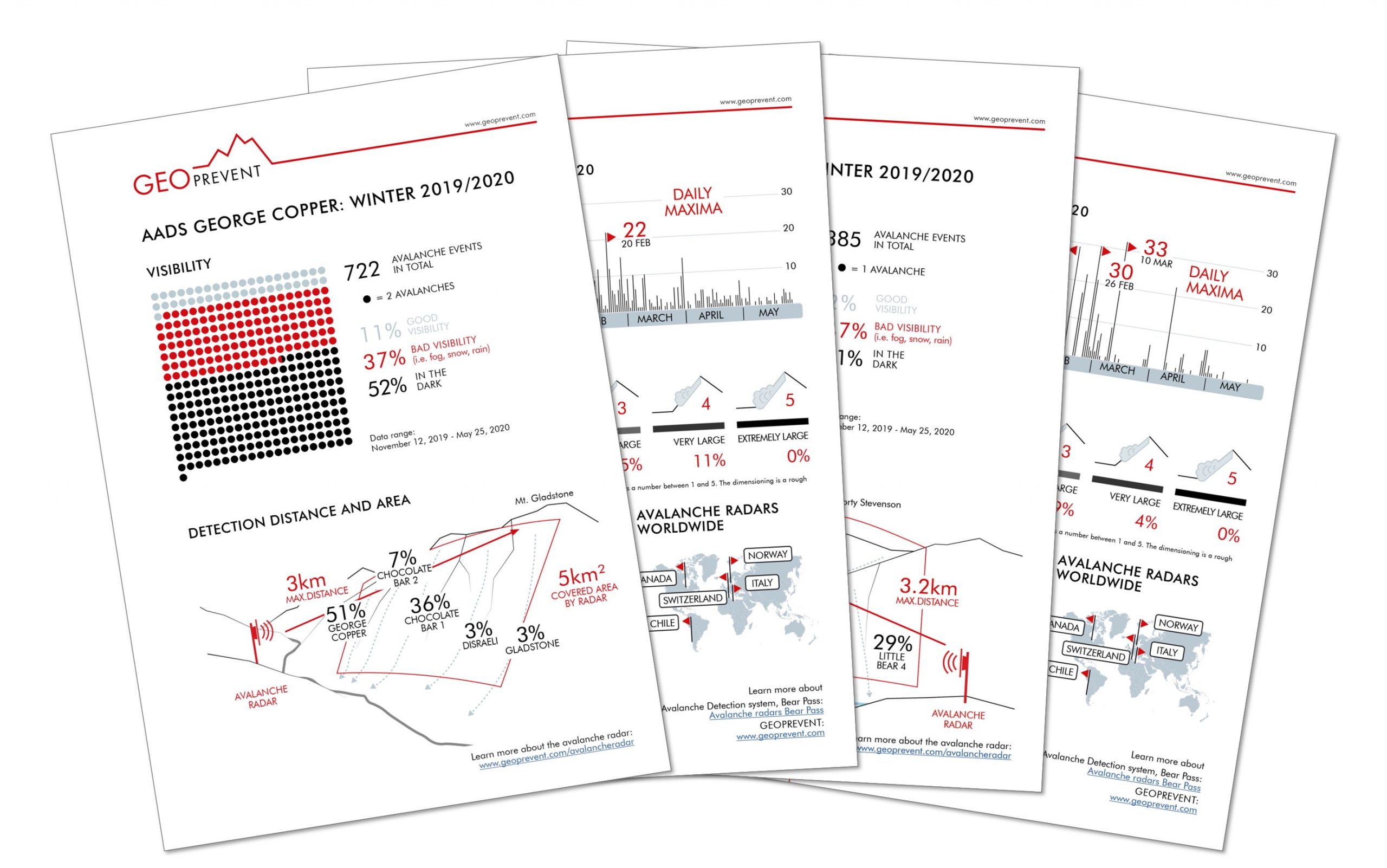Avalanche radars Bear Pass: more than 1100 avalanches detected in first winter 2019/20
The automatic avalanche detection system at Bear Pass, Canada, consists of three stations: the two radar stations, George Copper and Little Bears, and the relay station Mt Johnson for independent, redundant data transmission. The first winter of operation was characterized by above average snowfall and the two radar systems detected more than 1100 avalanche events, 722 at George Copper and 385 at Little Bears.
The novel system supports the local avalanche forecasting team in assessing the current avalanche situation and improving their understanding of the regional avalanche conditions. As a result, they have been able to reduce highway closure times by more than 40% of the annual average.
Visibility at detection
More than 50% of the events at George Copper and Little Bears occured in the dark. Of the day time events, 37% (George Copper) and 47% (Little Bears) took place in poor visibility, i.e. fog, snowfall or rain. Poor visibility conditions can, of course, also be the case in the dark. In this statistic, however, we only count poor visibility conditions if visual confirmation is possible. Only 11% for George Copper and 2% for Little Bears were visible events. In other words, visual detection is not an option for almost 90% (or even more for Little Bears) of avalanche events. Some event images are shown here.
George Copper radar
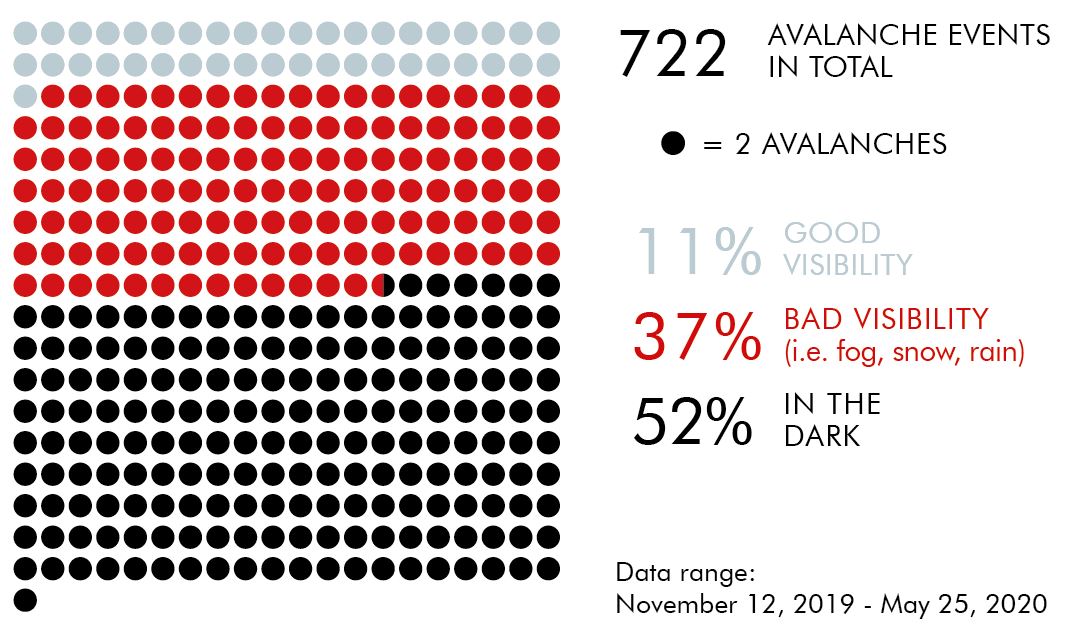
Little Bears radar
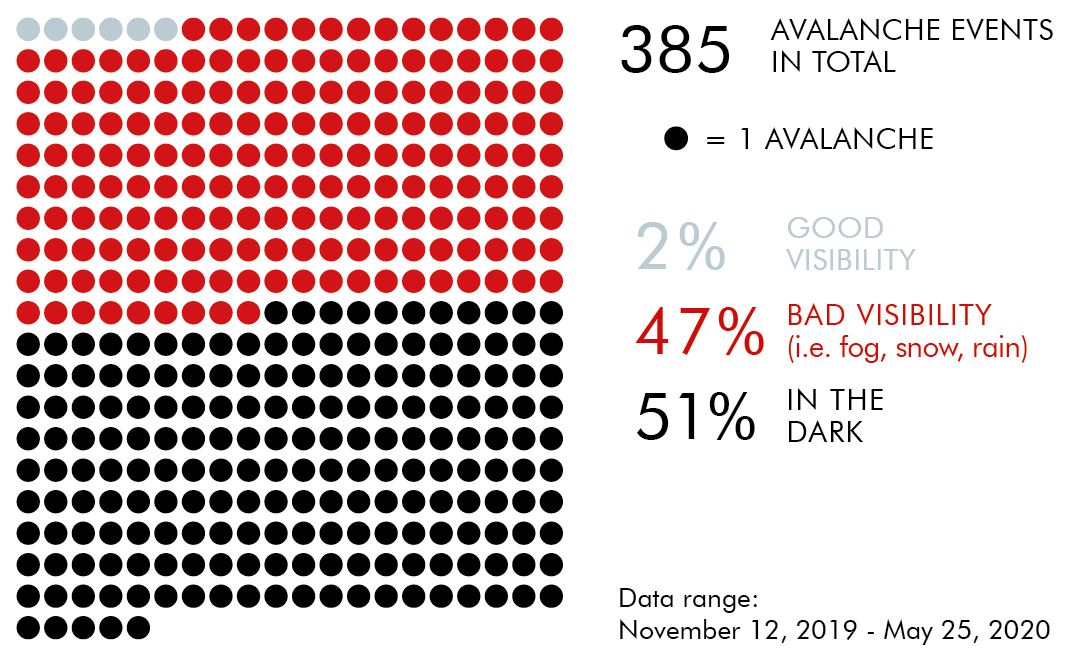
Detection distance and area
The maximum detection distance required at both stations is around 3 km. Currently, our avalanche radars achieve 5 km (for example at Randa, Switzerland). The opening angles of 90 degrees horizontally and 20 degrees vertically allow for monitoring of an area of 5 km² at each site and simultaneous coverage of up to 5 avalanche tracks with one radar device. The figures below show the frequency of avalanche events in the individual avalanche paths. For George Copper, more than half of the events occurred in the avalanche track named “George Copper”. This pattern is largely due to icefalls originating from the hanging glacier above.
George Copper radar
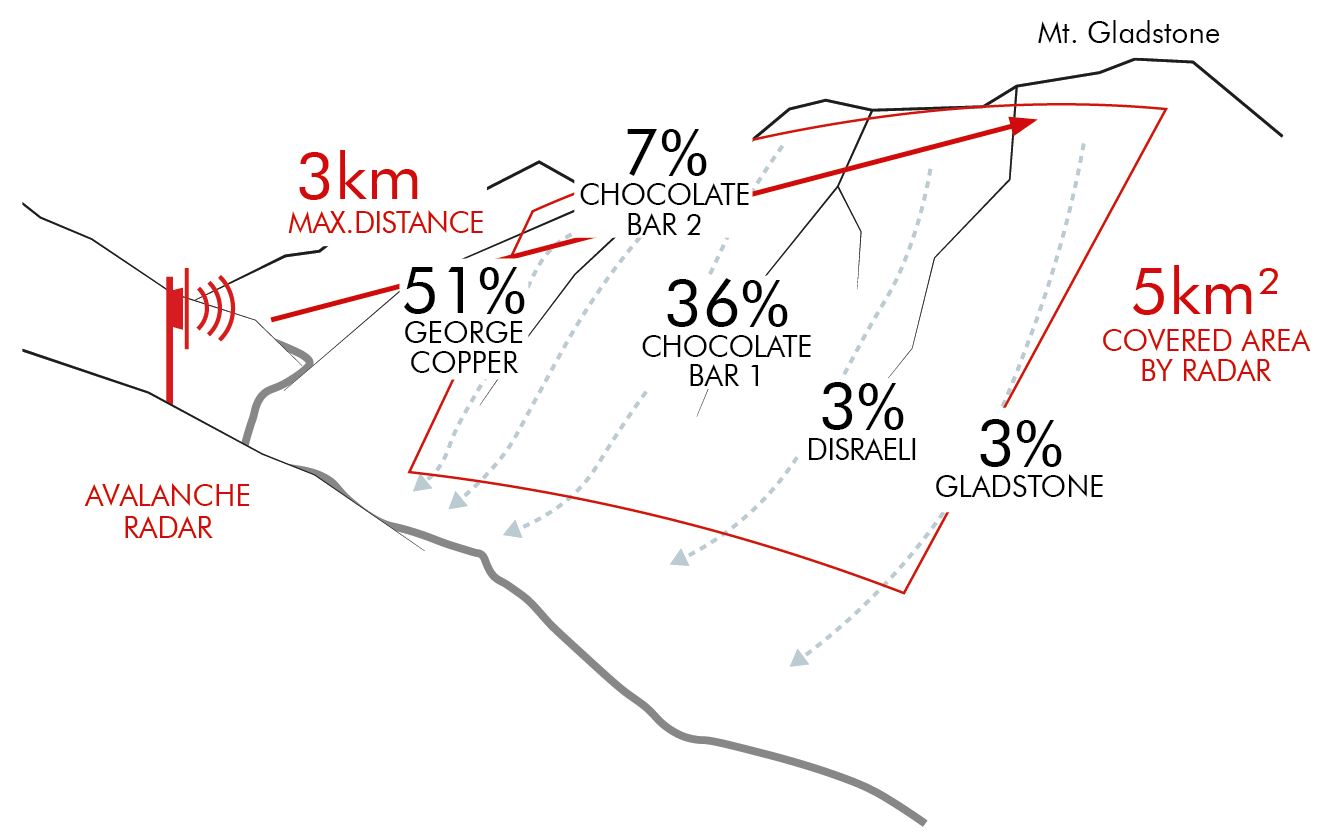
Little Bears radar
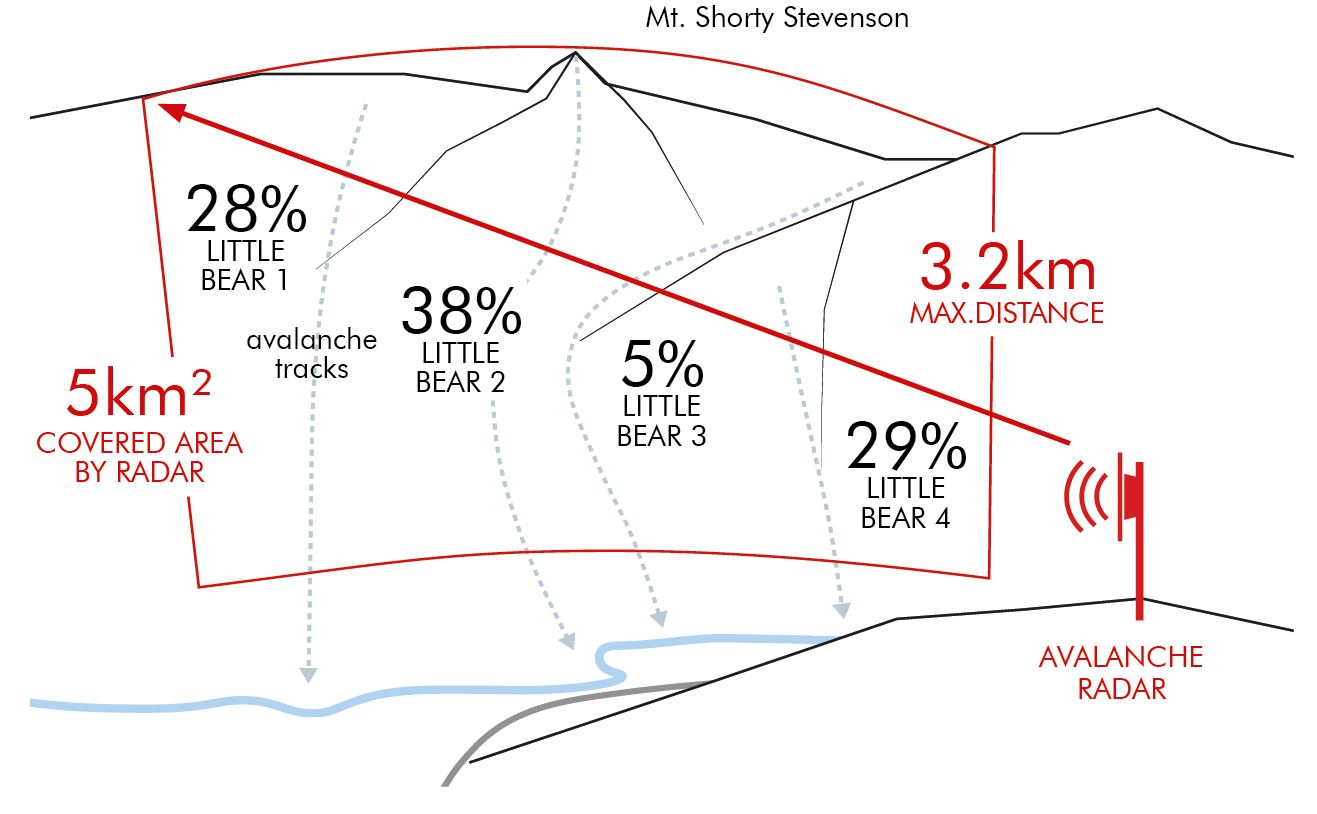
Time series winter 2019/20
The figures below show the events per day against time. At the George Copper site, events occur on a daily basis mainly due to the active hanging glacier above the avalanche tracks George Copper. The radars counted up to 35 avalanche events after and during periods of heavy snowfall. However, some of them remained small and would probably have been difficult to recognise by eye.
George Copper radar
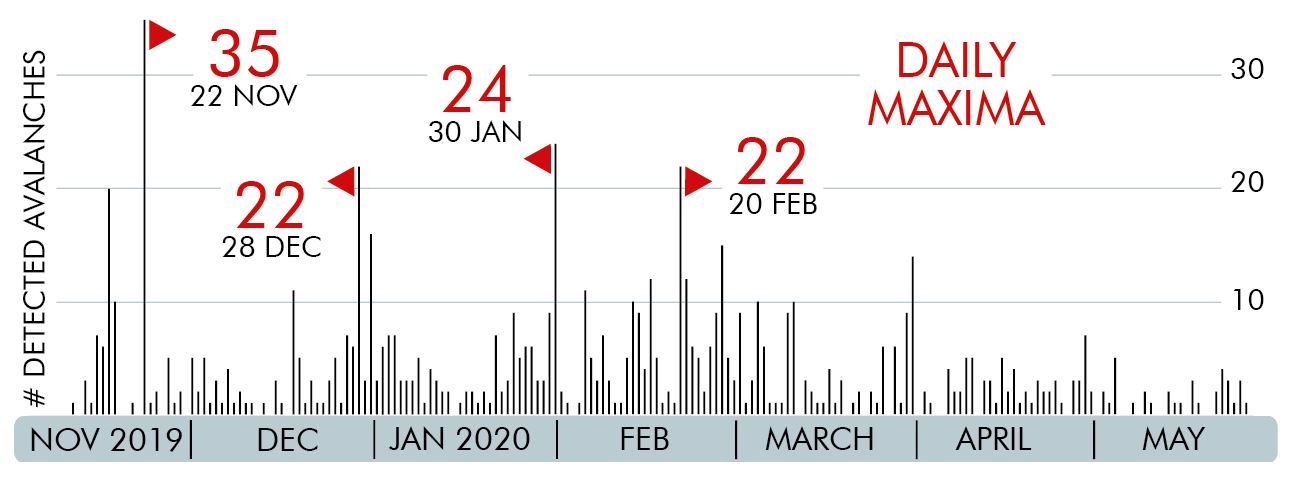
Little Bears radar
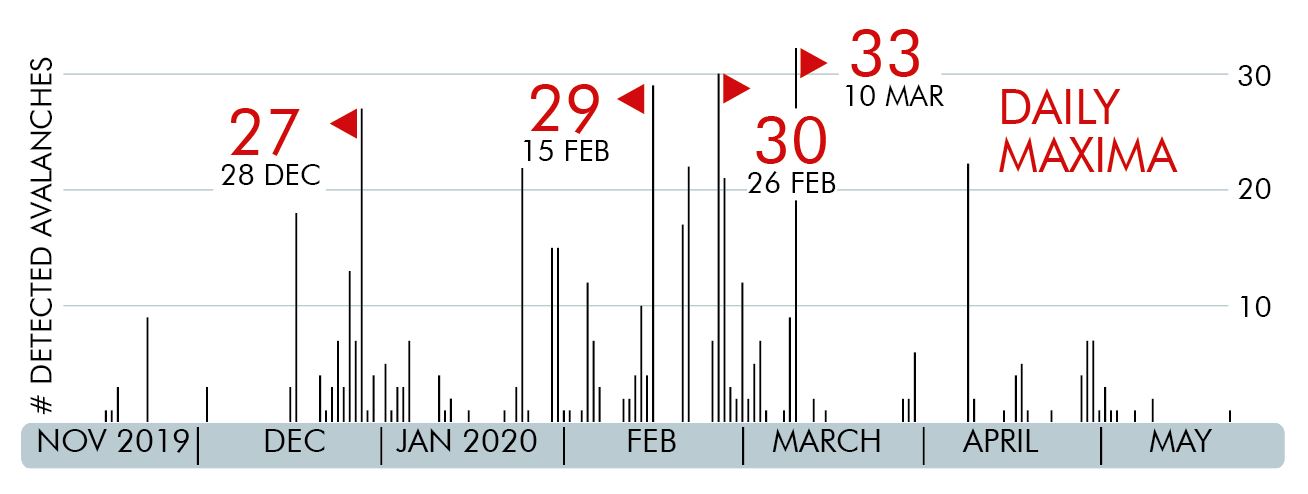
Avalanche size and duration
The radar automatically estimates the dimensions of a detected avalanche and assigns a number between 1 and 5. This is a rough indication of avalanche size, which further depends on avalanche exposure. An avalanche of size 3 is much larger than an avalanche of size 1, but the difference between an avalanche of sizes 3.1 and 3.3 can be much smaller. Most of the avalanches detected were medium to large, a few even very large.
George Copper radar

Little Bears radar

- More information about avalanche radar in our technology section.
- Further customer projects with avalanche radar installations in Switzerland, Norway or Italy can be found under the reference projects section.

